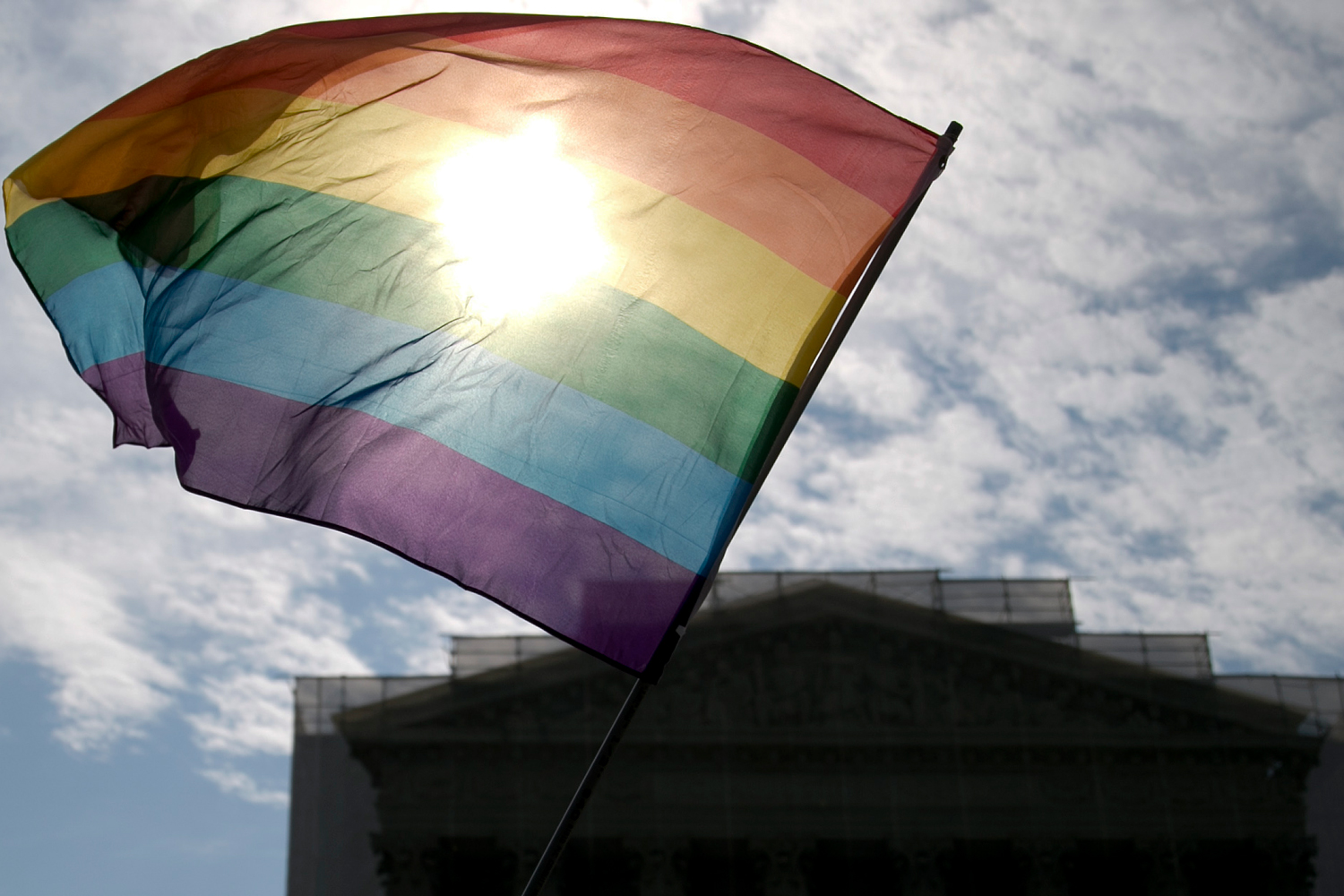
From the outside, it looks pretty clear: The LGBT equality movement is on the fast track, and the U.S. has reached that magic tipping point. The Supreme Court required federal recognition of same-sex couples’ marriages. Thirty-eight court decisions have been decided in favor of the right to marry for same-sex couples. The Equal Employment Opportunity Commission has begun to accept LGBT discrimination complaints all across the U.S. And 34 million workers now have protection from President Obama’s executive order regarding federal contracts.
Already 44 percent of the country (and half of same-sex couples) lives in a state with marriage equality, and 53 percent of U.S. workers have some kind of state or federal LGBT nondiscrimination policy coverage.
That’s all clear progress toward equality, but if we are indeed at a tipping point, we are precariously balanced atop it.
Let’s take, for example, the marriage issue. It has judicial momentum, sure, but no one knows when the Supreme Court will rule on the larger issue to ensure national marriage equality. In the meantime, more than 300,000 same-sex couples (and millions more single LGBT people who might someday want to marry) live in states that won’t allow them to marry or recognize their marriage. But the Court’s recent Hobby Lobby decision is already leading to a push for broad religious exemptions in LGBT-related laws that do pass, suggesting people looking for the full marriage and workplace equality pie might only get half of it.
If you’re not moving forward, you could be pushed back. (Especially during an election season where some pundits are predicting a GOP takeover that may not be LGBT-movement friendly.)
The momentum seems to have slowed on workplace equality laws. Although 21 states have outlawed sexual orientation discrimination since 1982, no state has taken similar action since 2009 (although six states have added gender identity discrimination protection since then). The long-fought-for bill granting federal protections to all U.S. workers, the Employment Nondiscrimination Act, passed the Senate last year but has gone nowhere in the House. Many employers now provide domestic partner health care benefits for employees with unmarried same-sex partners–but the growth in the share of private sector workers with access to those benefits has leveled off, settling at around one-third of employees whose employers provide benefits.
What’s behind this stagnation? One look at a map of LGBT-related laws shows one reason why the spread of equality may be slowing: activists spent the past few years picking the low-hanging fruit – accumulating victories in states with the strongest support for LGBT equality. The west coast and northeast are zones of almost full formal equality for LGBT people, along with a few northern states along the Mississippi. The southwest has pockets of progress. That leaves the southeast and a large set of states in the middle of the country where change has been difficult and slow in coming.
It’s an important reminder that legal change at the federal level still matters. For example, although many big, national corporations now see the equal treatment of LGBT employees as a good business decision, improving retention and recruitment of valuable employees and demonstrating good corporate values to customers and the public, there are a few notable holdouts, such as Exxon-Mobil. That’s where a federal policy can make a big difference. In fact, as a federal contractor, Exxon-Mobil will now be held to higher standards to comply with the president’s recent executive order: It will have to add sexual orientation and gender identity protections to its nondiscrimination policies.
So how do we get movement on those other laws? One place to start could be expanding the LGBT policy agenda – and joining forces with new political allies. Today, many LGBT leaders see those hard-won nondiscrimination laws of the past few years as only one element of an agenda of equal opportunity. For example, research demonstrates that LGBT people are more vulnerable than heterosexual people to poverty and food insecurity. To address those issues, LGBT activists could team up with a broader coalition of organizations to increase the minimum wage or advocate for paid family leave. LGBT groups have learned a lot about how to create cultural and political change over the last two decades, and that knowledge could be a valuable resource for allies in new causes – allies who could help spread the LGBT equality message to even more communities.
Of course, laws alone will not be enough. Even as we celebrate the fiftieth anniversary of the Civil Rights Act this year, the degree of continuing economic inequality between men and women or whites and blacks is still deeply troubling. The lesson there is that what comes after a policy change is at least as important as the new law, although enforcement and implementation are less exciting than the drama attached to their passage.
There’s still a lot of unexciting work to do on top of whatever drama awaits in the tougher states. But the LGBT movement is used to long odds. After all, no lesbian or gay man over 40 grew up thinking that they’d someday have the choice to marry their same-sex partner.
M. V. Lee Badgett is a Professor of Economics, and Director, Center for Public Policy Administration, at UMass Amherst. She is also a Williams Distinguished Scholar, Williams Institute, UCLA. This piece was originally published in New America’s digital magazine, The Weekly Wonk.
More Must-Reads From TIME
- The 100 Most Influential People of 2024
- Coco Gauff Is Playing for Herself Now
- Scenes From Pro-Palestinian Encampments Across U.S. Universities
- 6 Compliments That Land Every Time
- If You're Dating Right Now , You're Brave: Column
- The AI That Could Heal a Divided Internet
- Fallout Is a Brilliant Model for the Future of Video Game Adaptations
- Want Weekly Recs on What to Watch, Read, and More? Sign Up for Worth Your Time
Contact us at letters@time.com